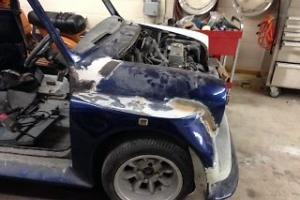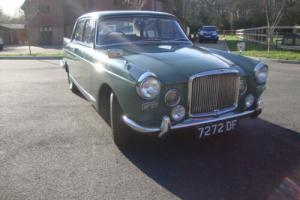Classic Cars / Austin / Car for sale
1968 Austin 1800 London-Sydney Marathon Car
Sale price: £37,500.00 make an offer
Car location: Weybridge, United Kingdom
Sale type: Fixed price listing
Technical specifications, photos and description:
- Model:
- 1800 London-Sydney Marathon Car
- Year:
- 1968
- Mileage:
- 71000
- Got questions?
- Ask here!
1968 Austin 1800 London-Sydney Marathon Car for sale
Current customer rating:The first London to Sydney Marathon was the result of a lunch in
late 1967. during a period of despondency in Britain following a
devaluation of the pound. The proprietor of the Daily Express. Sir
Max Aitken and two of his editorial executives. Jocelyn Stevens and
Tommy Sopwith. decided to create an event which their newspaper
could sponsor. and which would serve to raise the country's
spirits. Such an event would. it was felt. act as a showcase for
British engineering and would boost export sales in the countries
through which it passed.
The initial £10. 00 winner's prize offered by theDaily
Expresswas soon joined by a £3. 00 runners-up award and two £2. 00
prizes for the third-placed team and for the highest-placed
Australians. all of which were underwritten by theDaily
Telegraphnewspaper and its proprietor Sir Frank Packer. who was
eager to promote the Antipodean leg of the rally.
With its very strong bodyshell and hydrolastic suspension. the
BMC 1800. or 'Landcrab' as it has become popularly known. was
considered by the BMC Competitions Department. to be the ideal car
for the gruelling 10. 00 mile event. Freed of the usual minefield
of rally regulations. the Marathon rules allowed any two wheel
drive car with a maximum height stipulation so that the cars would
fit into the hold of theSS Chusan. A Works team of six. plus
a service car. were prepared for the Marathon based on the
experience on the Safari and the Acropolis Rallies with over of 600
hours of testing round Bagshot. Five of the cars were to be built
by the Competitions Department. including the service car. with the
remaining two being built by the Special Tuning Department at
Abingdon under the direction of Basil Wales - one each for the
Royal Navy and the RAF. All of the Works cars were painted in the
traditional BMC works colours of red with a white roof with the
exception of the Royal Navy car offered here. which was all
white.
The final specification of the Marathon cars was based on the
newly introduced Mk2 1800S models but with some major
modifications. They were built up from bare shells. using Mk1
suspension with the larger front displacers fitted to the rear to
cope with the increased load. The body was strengthened in the area
of the boot floor and suspension housings to allow fitting of Koni
telescopic shock absorbers with front and a rear anti roll bars
fitted. as was standard on very early Mk1 cars.
The engine was not highly tuned. The capacity was increased to
1894cc and the camshaft was standard MGB with the cylinder head
re-worked by Downton. Twin 1. 75 inch SUs carburettors were
fitted and the exhaust exited through the rear apron. The gearbox
ratios were standard. although a competition clutch was added and a
reliable 100bhp was achieved at the lightened flywheel; not much
for such a heavy car. The final drive ratio was 4. 1. again from the
Mk1 and they ran on 13" Minilite wheels shod with 175/13 Dunlop SP
44 tyres. or for the Nulabour in Australia. SP Sports.
A quicker 3. 25 to 1 steering rack. with a 16 inch Mountney
steering wheel. replaced the slow. standard 4. 4 to 1 ratio rack.
The interior was fitted out for the three man crew with the rear
seat convertible into a bed. A Hydrolastic pump sat on the rear
parcel shelf; some. but not all. of the windows were Perspex and
the doors. bonnet and boot were aluminium skinned to save a little
weight. Twenty six gallons of fuel in twin tanks filled the boot. br/>so the spare wheels had to go on the roof. This resulted in the
finished car with crew weighing in at around the 2 ton mark.
VLM 128G was sent to the Works by the British School of Motoring
to be prepared for a team from the Royal Navy to compete in the
Marathon as a Works prepared and Works supported car. The
drivers were J. Hans Hamilton. Phillip Stearns and Ian
Lees-Spalding and they finished in 31st place out of the fifty six
finishers from one hundred starters. winning the award for the
smartest finisher. After the event was over. VLM 128G. unlike
the other BMC 1800 Team Cars. was immediately sent to Singapore on
a Hercules transporter plane and then back to the UK by Royal Fleet
Auxiliary ship to do the rounds of the sponsors. The car was then
handed back to BSM for use as a fast pursuit training vehicle. br/>which accounts for its having survived in such original
condition.
The car was discovered in Southampton in 1981 when owned by a
South African marine cadet. It was purchased by the current vendor. br/>a keen amateur road rally driver. who wanted to compete with it.
However. the discovery of documentation referring to the Royal Navy
entry in the Marathon under the rear sea t caused the new owner to
realise he had acquired something out of the ordinary and a period
of thorough research commenced. .
Also published at eBay.co.uk
Want to buy this car?
Comments and questions to the seller:
Other classic Austin cars offered via internet auctions:
 price: £4,495.00Austin Healey Sprite
price: £4,495.00Austin Healey Sprite price: £6,411.00Austin mini van 1979
price: £6,411.00Austin mini van 1979 price: $2,000.00Austin Mini rare wide body
price: $2,000.00Austin Mini rare wide body price: £8,050.001963 Austin Vanden Plas Princess 3 litre.Only 3 previous owners. Low mileage car
price: £8,050.001963 Austin Vanden Plas Princess 3 litre.Only 3 previous owners. Low mileage car
Latest arrivals:
-
$500.000
-
$5,300.000
-
$8,000.000
-
$10,200.000
-
$565.000
-
$6,700.000
-
$23,900.000
-
$0
-
$16,995.000
-
$0
-
$19,500.000
-
$19,995.000
-
$16,995.000
-
$5,100.000
-
$55,000.000
-
$24,900.000
-
$12,499.000
-
$30,000.000
-
$21,900.000
-
$4,207.000



























